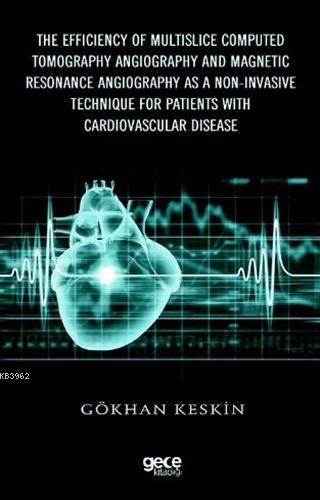The Efficiency of Multislice Computed Tomography Angiography and Magnetic Resonance Angiography as a Non-Invasive Technique for Patients with Cardiovascular Di
Boyut:
135-210-0
Sayfa Sayısı:
37
Basım Yeri:
Ankara
Baskı:
1
Basım Tarihi:
2020-05-15
Kapak Türü:
Ciltli
Kağıt Türü:
2.Hamur
Dili:
İngilizce
%33
indirimli
117,00TL
78,39TL
Havale/EFT ile:
70,55TL
9786257938679
501727

https://www.sehadetkitap.com/urun/the-efficiency-of-multislice-computed-tomography-angiography-and-magnetic-resonance-angiography-as-a-non-invasive-technique-for-patients-with-cardiovascular-di
The Efficiency of Multislice Computed Tomography Angiography and Magnetic Resonance Angiography as a Non-Invasive Technique for Patients with Cardiovascular Di
78.39
Development of multislice computed tomography angiography (CTA) and magnetic resonance angiography (MRA) technologies as non-invasive diagnostic tools for evaluation of cardiovascular diseases including aortic and its major collateral system provide more detailed information preoperatively and postinterventional periods. Because traditional angiography has some side effects, CTA and MR as non-invasive approaches in cardiovascular structures are being used for demonstrating cardiac, aortic and pulmonary trees for a long time. These approaches are more prevalent especially in older and young's patients who have acquired or congenital cardiovascular disease or in patients with additional risk factors such as diabetes, and renal failure [1-9]. The prompt diagnosis and treatment of aortic diseases are the key role to salvage an ischemic complication. Advancements in CTA and MRA have made vascular modality of choice for accurately diagnosing vascular disease such as aortic aneurysm, aortic occlusion, and its management. Three-dimensional multi-detector CTA provides non-invasive, direct imaging of virtually the entire vascular system is a safe, effective and accurate method without the inherent risk attributed to invasive angiography. Cardiovascular CTA and the diseases for which it is meant to diagnose into an easy to follow and inclusive resource [10-12]. CTA angiography in elective or emergent situations is given more detailed information's for radiologists, cardiologist, and cardiovascular surgeons as well as for those already in practice. All procedures perform easily in out-patients and techniques comprehends with the aid of quality images. For those already proficient in vascular CTA, this chapter will serve as a resource as it compiles a complete review, imaging protocols, suggestions, the states of aortic, pulmonary and their major vascular structures, and imaging tips in all location of arteries in-cluding coronary arterial tree.
Development of multislice computed tomography angiography (CTA) and magnetic resonance angiography (MRA) technologies as non-invasive diagnostic tools for evaluation of cardiovascular diseases including aortic and its major collateral system provide more detailed information preoperatively and postinterventional periods. Because traditional angiography has some side effects, CTA and MR as non-invasive approaches in cardiovascular structures are being used for demonstrating cardiac, aortic and pulmonary trees for a long time. These approaches are more prevalent especially in older and young's patients who have acquired or congenital cardiovascular disease or in patients with additional risk factors such as diabetes, and renal failure [1-9]. The prompt diagnosis and treatment of aortic diseases are the key role to salvage an ischemic complication. Advancements in CTA and MRA have made vascular modality of choice for accurately diagnosing vascular disease such as aortic aneurysm, aortic occlusion, and its management. Three-dimensional multi-detector CTA provides non-invasive, direct imaging of virtually the entire vascular system is a safe, effective and accurate method without the inherent risk attributed to invasive angiography. Cardiovascular CTA and the diseases for which it is meant to diagnose into an easy to follow and inclusive resource [10-12]. CTA angiography in elective or emergent situations is given more detailed information's for radiologists, cardiologist, and cardiovascular surgeons as well as for those already in practice. All procedures perform easily in out-patients and techniques comprehends with the aid of quality images. For those already proficient in vascular CTA, this chapter will serve as a resource as it compiles a complete review, imaging protocols, suggestions, the states of aortic, pulmonary and their major vascular structures, and imaging tips in all location of arteries in-cluding coronary arterial tree.
Yorum yaz
Bu kitabı henüz kimse eleştirmemiş.










